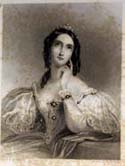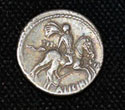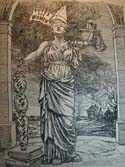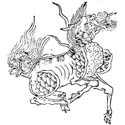Hunterian Associates projects A-Z
Click the project names to see more on each one. Projects are listed alphabetically by title.
Muirhead Bone (1876-1953), a celebrated Glasgow-born artist, created a set of etchings and drypoints of the buildings, gardens, amusements, and architectural features of the Glasgow Internation Exhibition in 1901. My project, entitled centres around a collection of these works held by The Hunterian. Read More...
A great treasury of birds is just waiting to be discovered in the host of sites, eclectic holdings, and avian specimens found in The Hunterian at the heart of the University of Glasgow. What makes The Hunterian’s collection unique in the scientific world of birdsis its connection to the University of Glasgow’s Special Collections, which holds one-of-a-kind medieval manuscripts, eighteenth-century hand-coloured images, and nineteenth-century colour plates. Read more...
The prints and images of the Hunterian Collection and University of Glasgow Special Collections contain various representations of bagpipes. In an online exhibition, I analyse the symbolic value of the instrument in its context, unpacking the story behind its presence in the various artworks
Through exploring the Blackie & Son archives held at the University of Glasgow, we will be able to access the personal items which Dr. Blackie put together himself. These include: diaries (which cover a broad period of the nineteenth century), personal letters, scrapbooks, as well as key business materials which record the inner workings of the firm. The project will be particularly interesting for those who want to find out about the publishing industry during the nineteenth century, and the ways in which Glasgow was grounding itself as a hub for social and cultural change. Read More...
Through this project I seek to explore the Brachial Plexus from a different perspective, introducing interested audiences to the beautiful and complex anatomy of their own nervous system through interaction with Hunter’s nerve drawings and dissection specimens. read more
Castrati (castrated male singers) in eighteenth century Europewere leading musical figures who dominated performances on the operatic stage. This voice type is now lost to the modern world as the act was banned in the early twentieth century. The very existence of the castrati brings up a number of questions: what did they sound like; how did they influence the operatic world; what legacy did they pass onto other singers? We may never hear what these operatic castrati actually sounded like, but they have left behind a small glimpse. Read More...
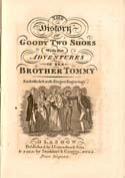 Chapbooks: Literature of the Streets
Chapbooks: Literature of the Streets
Chapbooks, or ‘cheap books’, were inexpensive, small, paper-covered booklets that were produced for a newly literate, primarily working class population that could not afford books. Their circulation began in the mid-sixteenth century. There are well over 1000 chapbooks held in Special Collections at University of Glasgow and I will be reading them all and vlogging the highlights. Read More...
Classical epic has influenced art and culture for millennia, with epic forms represented in everything from ceramics to comic books. From Homer to Ovid, the myths and tales of classical heroes have assumed such a central position in Western culture that their influence can be seen in nearly every facet of contemporary life. With this project, I hope to explore how the modern age has been shaped by ancient narratives and showcase the expansive influence of the epic. Read more...
The blog, 'Cutting edge Chronicles'builds on my existing PhD research into invisible narratives in Early Neolithic Scotland. It will focus on several individual axe 'biographies', providing information relating to each artefact's prehistoric life-cycle (raw material source, manufacture, exchange and ownership, final deposition) and its subsequent contemporary journey to The Hunterian Collections. Read more...
In western cultures, there is a taboo associated with talking about death and dying. Although historically, specific attitudes, beliefs, and practices around death and dying have changed, the taboo itself remains. But recently, the Death Positive Movement has begun working to change public perception. The Gemmell Collection in the library, is a collection of editions of the Dance of Death, which was bequeathed by the Glasgow physician and magistrate, William Gemmell (1859 – 1919). Read More...
This project will investigate the historical artistic precedents to William Hunter’s famous anatomical atlas, The Anatomy of the Human Gravid Uterus. It explores the significance of the drawings that Hunter inherited from his mentor, anatomist and man-midwife James douglas (1675- 1742),which are held in the Hunter Library at Special Collections . Read More...
Drawn Together - A conversation with the collection was a weeklong artist residency in The Hunterian museum, October 14th - 18th, 2014. Drawn Together: Visitors observed and contributed to the making of a piece of artwork by creating drawings. These drawings and recordings were incorporated into the artwork and exhibited on a project blog. Read more...
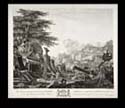 Illustrations for the English edition of Torquato Tasso's epic fantasy, Jerusalem Delivered, based on the First Crusade are held in the Hunterian’s Art Gallery collection. This project explores the themes of fact, fiction and fantasy in this epic poem and it's illustrations and presents them in the form of a blog.
Illustrations for the English edition of Torquato Tasso's epic fantasy, Jerusalem Delivered, based on the First Crusade are held in the Hunterian’s Art Gallery collection. This project explores the themes of fact, fiction and fantasy in this epic poem and it's illustrations and presents them in the form of a blog.
The Georgian Era in Glasgow (1714-1837) was a time of much cultural, politic, and religious upheaval. The ephemera from the city in this time often provide more detail than you will find in the history books of Scotland, and the recycled impressions of Glasgow. Read more...
The industrial revolution brought wealth and prosperity to the city of Glasgow, transforming the relatively small town into a powerhouse of the British Empire. The middle and upper classes reaped the benefits of commerce through the development of industries such as textiles. Shipbuilding and engineering brought good wages and decent living standards to many of the skilled working classes. Glasgow became known as the second city of the empire.
The city’s industrial growth and prosperity hides the bleaker tale of Glasgow’s unskilled working class. Find out about University of Glasgow Alumni in the19th Century whose pioneering work linked poverty with disease. Read more..
A project centered on Edwin Morgan’s socially driven sequence of ‘Glasgow Sonnets’, featuring rare books and manuscript material from Glasgow University’s special collections and artworks from The Hunterian. Read more...
Ongoing conflict between Israel and Palestine today keeps the Holy Land much in the news. Arguments rage over how these lands are presented, with biases of western media regularly alleged and defended. Inspired by this contemporary context, my project turns to an almost 200 year old publication: Finden’s Landscape illustrations of the Bible (1836). Read more...
The Northern Rebellion of 1569 was a short but significant challenge to Queen Elizabeth I’s authority yet outside specialist scholarship it remains largely unknown. In our Game of Thrones addicted age it seems like a good time to reconsider this rebellion, via the medium of Manuscripts from the Hunter Collection in Special Collections.
 Ian Hamilton Finlay's Poem Prints "Summer Sails"
Ian Hamilton Finlay's Poem Prints "Summer Sails"
The Hunterian Art Gallery has within its archives a collection of screenprints by the Scottish poet and artist Ian Hamilton Finlay. Dating predominantly from the mid-1960s, the prints reveal a poet in transition as he explores new poetic possibilities in the intermingling of word and image. Read More...
The importance of bone as a living and dynamic organ system serving diverse essential roles beyond structure in the vertebrate body is not widely recognised in the popular imagination. This project hopes to change public perception about the biological processes that create the bone they observe in a museum. Read more...
Many objects in The Hunterian used to be teaching objects: handled, passed around and closely scrutinised. Now they often exist behind glass, reflecting only one aspect of their previous functions and former lives. This interactive project looks at how objects have evolved from teaching materials to museum pieces and considers how collecting and display practices have shifted.
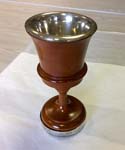 Objects of Reminiscence: Remembering the Old College
Objects of Reminiscence: Remembering the Old College
When the University of Glasgow moved from the Old College site on the High Street to the Gilmorehill campus in 1870, the Old College and its importance to the university’s history was not forgotten. Wooden objects made from parts of the Old College buildings, and photography books showing images of the campus provide a link to the former site. Read More...
Painting Flesh: A technical examination of portrait skin tone in the 16th Century.
Being an artist in the sixteenth century usually meant being apprenticed from an extremely early age to a master, and studying the treatises published by those masters before them. A huge amount of emphasis is devoted in these artistic tracts to the painting of skin-tone and faces, changing depending upon gender, rank and age. My research will use technical photography and paint analysis to establish working methods and reveal how much these instruction manuals translated into everyday practice.
Working with the Syphilis Collection in Special Collections alongside the syphilis skulls in The Hunterian, this project investigates the emotional history of syphilis in eighteenth-century Britain. Read More...
Through his life and work as a researcher, much loved lecturer, and a clinician, John Cleland (1835-1925), Professor of Anatomy at the University of Glasgow from 1877 to 1909, collected a diverse range of anatomical, pathological, and zoological specimens. Through online display and a series of talks, this project explores Cleland’s collection in its broader historical context. Read More...
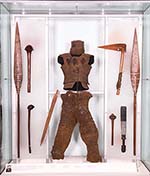 RevGTurner's Samoan Sketchbook
RevGTurner's Samoan Sketchbook
Reverend George Turner was a medical doctor , missionary and University of Glasgow graduate. He traveled throughout Polynesia in the mid-19th century, writing extensively about his interactions with the people and culture of Samoa as he saw them. His writings covered medical issues, such as the longevity of the Samoans, and religious issues, such as the forms taken by their worship . Read More...
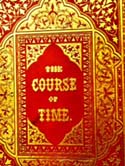 The Poem That Time Forgot, Robert Pollok's "The Course Of Time"
The Poem That Time Forgot, Robert Pollok's "The Course Of Time"
In 1827, an epic poem entitled The Course of Time was published to great acclaim and admiration. The author was Renfrewshire-born Robert Pollok (1798-1827), a divinity graduate of the University of Glasgow. Read More..
This project primarily examines the life and work of Sir Ronald Ross (1857-1932) through an exploration of his medical textbook Malarial Fever: Its Cause, Prevention and Treatment which is held by The Hunterian. Read More...
This project will examine 75 rare Silver Fork novels held by Special Collections. Silver Fork fiction was a popular genre from the 1820s to the 1840s which is hardly studied at all today. One of the primary purposes of Silver Fork fiction was to provide middle-class readers with an inside view to high society, with each text giving semi-satirical guides for upper class behaviour.
Small Change Big Games explores images of games and festivals on Roman coins in The Hunterian’s collection.
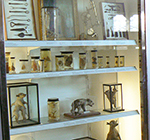
This project aims to highlight the unique stories of some of William Hunter’s anatomical specimens in an online exhibition, using them to explore medicine, life and society in the 18th century. Read More...
The Known and the Unknown: Revealing the designers of the Stoddard-Templeton collection held in the University Archives. Read more...
The University of Glasgow's Special Collections and Archives hold a variety of historical items relating to the women's suffrage movement, both those stridently in favour of giving women the vote and those staunchly against it. I intend to create a dialogue between these items, specifically the satirical magazine Punch (1814-1992, 1996-2002) and an unpublished suffragette memoir held in the Archives entitled The Life Story of Elizabeth Thomson (1847-1914). Read More...
What can objects tell us about their original cultures? People have been moving since the beginning of times and so has their stuff! This project explores mediterranean cultures in the 2nd millenium BC through some of that 'stuff' that now resides in The Hunterian. Read more...
The Hunterian currently holds over three hundred Chinese blue and white porcelain pieces from the James McNeill Whistler’s Collection. These objects give one a sense of Whistler’s enthusiasm for oriental works of art, not only as a collector but also as an artist. Read More...
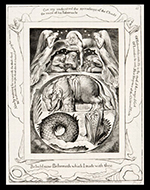 No eighteenth-century poet and engraver is more famous today than William Blake (1763-1827). He is perhaps best known for the words ‘And did those feet in ancient time’, from the ballad, set to music in 1916 by Sir Charles Hubert Parry. It has become known as the Jerusalem Hymn, now performed every year at the Proms and a favourite anthem of England Football fans. Blake was born in London and trained as an engraver with a man called James Basire. At the time, engraving was viewed as a skill, an expert trade used primarily to complete the reproduction of another artist’s designs.Blake's real ambition was to make his own art work. Read More...
No eighteenth-century poet and engraver is more famous today than William Blake (1763-1827). He is perhaps best known for the words ‘And did those feet in ancient time’, from the ballad, set to music in 1916 by Sir Charles Hubert Parry. It has become known as the Jerusalem Hymn, now performed every year at the Proms and a favourite anthem of England Football fans. Blake was born in London and trained as an engraver with a man called James Basire. At the time, engraving was viewed as a skill, an expert trade used primarily to complete the reproduction of another artist’s designs.Blake's real ambition was to make his own art work. Read More...
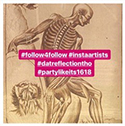 “A picture is worth a thousand words.” We’ve all heard this common saying, but is it true? Recent research shows that words and images are increasingly linked to each other, that text and pictures can actually work together to create powerful meanings—and that social media sites might be a perfect, modern platform to showcase this balance. This project is creating an Instagram art gallery featuring pieces from The Hunterian and the University of Glasgow’s Special Collections, and related poetry. Read More...
“A picture is worth a thousand words.” We’ve all heard this common saying, but is it true? Recent research shows that words and images are increasingly linked to each other, that text and pictures can actually work together to create powerful meanings—and that social media sites might be a perfect, modern platform to showcase this balance. This project is creating an Instagram art gallery featuring pieces from The Hunterian and the University of Glasgow’s Special Collections, and related poetry. Read More...


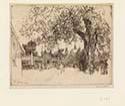
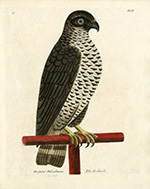 Avian Treasures
Avian Treasures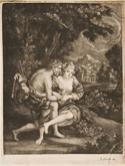
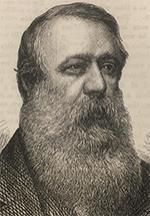
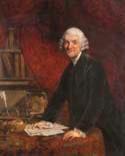
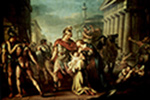
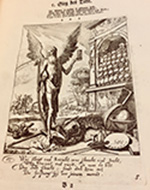
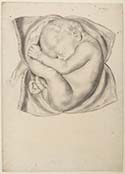



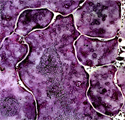
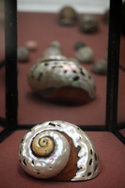
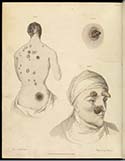 Pox and Prejudice
Pox and Prejudice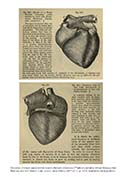
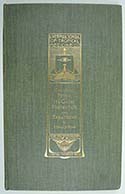 Researching Sir Ronald Ross
Researching Sir Ronald Ross